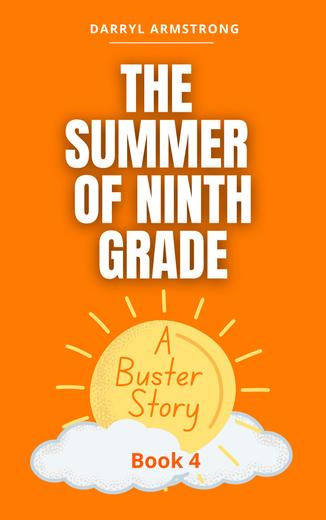
Age:
Middle School
Reading Level: 5.2
Chapter 1
Marking events by school year makes it easier for me to remember when things happened since Buster and I were in the same grade.
Not much happened in this small town. So, Buster became a huge part of my life.
His antics kept me occupied. It seemed like he always had a scheme in mind.
That summer, Buster went to the mayor’s house every day.
He crept through the garden to the window in the den. That’s where the maid hung the mynah bird.
Each morning, the little black bird could enjoy fresh air and sing to the other birds outside.
For weeks Buster stood under the windowsill. He spent nearly an hour each day teaching the bird a new phrase.
The bird was eventually given to a cousin in Indiana after it said, “The mayor is a shithead.”
It repeated this several times while they waited for the new owners to arrive.
The mayor swore it sounded like Buster’s voice. But most people felt that his claim was absurd.
Chapter 2
Buster sold apples from the Hallickson’s tree, which grew next to their house on County Line Road.
The problem was that the Hallickson’s did not give Buster permission to take the apples.
When the time came for the apple pie fair, Mrs. Hallickson discovered all her apples were gone.
Buster undersold the grocery store by three cents an apple.
Nobody could figure out how he could afford to grow and sell them that cheap.
Herbert Jorgenson had a pond in his yard and filled it with goldfish. There were nearly fifty goldfish in the pond beneath the lily pads.
Buster began netting three to four fish a night. Then he’d sell them for a nickel each to the kids in the neighborhood.
He even had a guaranteed replacement policy if the fish died within the first three days.
Business boomed for Buster. He set up his sales using an old apple crate outside the Palace Theater on Moser Street.
As the kids left the movie theater, they would see the fish for sale in mason jars. Buster’s stock sold out every day in less than twenty minutes.
Mr. Jorgenson finally noticed that his supply of fish was decreasing.
He thought racoons were the problem. So, he hired a guard to keep the raccoons away from the pond.
Well, he hired Buster to patrol the pond for a couple of nights.
Buster reported to Mr. Jogenson that he had seen several ’coons trying to make it to the pond before he shooed them away.
After a fence was built around the pond and the fish still disappeared, Mr. Jorgenson finally gave up.
He decided the fish were being taken by birds.
Chapter 3
Buster’s father worked on the railroad. The summer of 1931, he offered to give Buster a ride on the train to Washington Township and back.
Buster was excited about the opportunity.
Buster’s father, Lafayette, toured the train with him. Layfayette settled Buster in the caboose for the return trip to home.
Buster asked him how he went to the bathroom on the train. In those days, they did not have holding tank bathrooms on trains.
His father explained that, for the most part, “We just stand on the outside of the caboose and water the side of the track. Most of the tracks are out in the countryside anyhow.”
It is customary for all of us to watch passing trains. We watch until we see the caboose, which is the last car on the train.
When the urge became strong enough, Buster could not wait to try out this unique way of urination.
The slow-moving train chugged through a narrow pass between two dense woods. Buster thought that this would be enough privacy.
Buster stood at the rear of the train. As he let it fly, the trees stopped, opening into a large clearing.
The train passed by a church picnic hosted by the honorable P. T. Traufman.
By the time Buster realized he was the focal point of one hundred people at a summer picnic, it was far too late.
Reports of Mayor Traufman throwing rocks after the train were probably exaggerated, but they came from several sources.